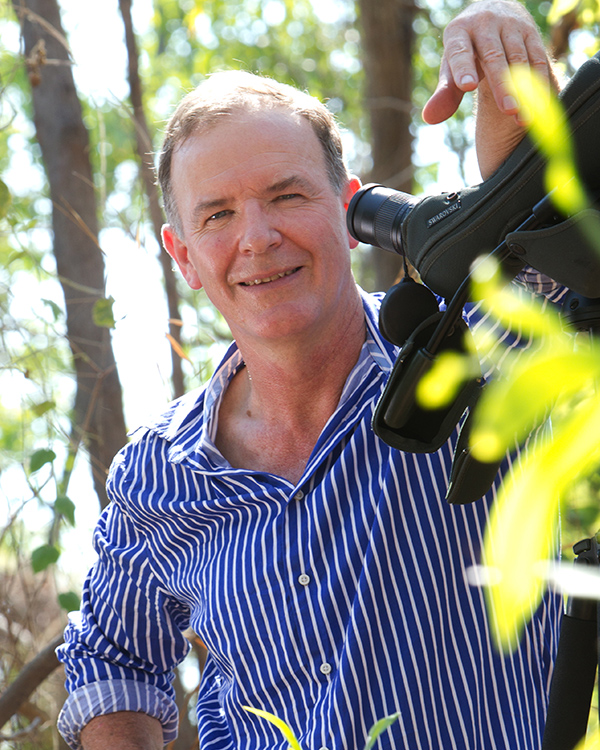
Research in Brief
The Iconic Species in Schools project will investigate and quantify the environmental and cultural benefits of reconnecting children with Australia’s unique biodiversity and cultural heritage.
The project will use activities including habitat provision, active learning and play to deliver conservation messages to children and expose them to Indigenous culture and heritage.
The research is expected to also offer enhanced social and personal benefits associated with exposure to nature, and educational benefits from innovative exposure to and engagement with STEM (Science, Technology, Engineering and Maths).
Why is the research needed?
School grounds currently represent an under-utilised resource for habitats for native species, including threatened species. This project will carefully select species that are of high conservation and cultural value that could be grown at schools or have habitat provided for them at schools.
The project will also meet important goals of education across multiple jurisdictions in Australia, namely, to expose children to Indigenous culture and heritage, and to STEM. Exposure to Indigenous heritage and Traditional Knowledge may also provide an effective frame for helping children (and potentially their teachers and families) understand the value of biodiversity.
Further, the project will deliver benefits associated with connection to nature. Human populations around the world, and particularly children, have been experiencing decreasing exposure to nature – termed the ‘extinction of experience’. This disconnection from nature is linked with an increasing disaffection for nature within the general community. Therefore, reconnecting people with nature is vital to increasing community support for and buy-in to nature conservation, including threatened species conservation. Tropical Bush Tucker Spread. Photo: Kochtopf Flickr CC BY-NC-ND 2.0
Tropical Bush Tucker Spread. Photo: Kochtopf Flickr CC BY-NC-ND 2.0
How will the research help?
This research can contribute directly to improved management of Australia’s threatened species through the planting of habitat for iconic species on school grounds. Schools currently represent a large but untapped habitat opportunity.
The research has further indirect contributions to recovery of threatened species through:
- helping to foster a deep connection to and sense of stewardship for Australia’s threatened species in children (and potentially their teachers and their families), thereby helping to ensure active community participation and conservation volunteering into the future.
- enhancing children’s (and their teachers and families) appreciation of Indigenous culture and knowledge, and its critical role in threatened species conservation efforts. The project aims to connect Indigenous and non-Indigenous children to Indigenous culture through preserving iconic threatened or culturally important species.
Finally, the project can help deliver increased awareness and engagement of the community in biodiversity stewardship through outputs including fact sheets and community interest stories promoted through the media and on social media.
What research activities are being undertaken?
The research project will consist of several sequential activities:
- Identifying case study schools and species through collaboration with project researchers, partners, local Indigenous groups and schools
- Developing a learning/engagement program in consultation with schools, local Indigenous groups and partners that meets all ethics requirements for working with children and Indigenous communities
- Assessing direct, on-ground benefits of habitats through before and after ecological monitoring of the school grounds and immediately surrounding areas
- Delivering workshops to bring together key project partners and stakeholders to discuss the strengths and weaknesses of the program with a view to applying it to other schools.
The goal of each of these activities is to seek to understand how the participating children’s engagement with the iconic species influences:
- connection to nature and attitudes towards biodiversity and threatened species
- understanding and appreciation of Indigenous culture and their connections to threatened species.
The research will also examine whether the influence of the program on the children also influences the attitudes and understandings of their parents and teachers.
Who is involved?
The project is being led by RMIT University who are collaborating with the Office of the Threatened Species Commissioner, the Victorian Government and the NSW Office of Environment and Heritage.
The team will also engage local schools and Indigenous Traditional Owners in the case study regions. The NESP Threatened Species Recovery Hub has provided additional funds to engage an Indigenous researcher to lead the Indigenous aspects of the research.
Where is the research happening?
The research will take place in at least one and potentially two primary schools, most likely in Victoria and in New South Wales, in locations yet to be determined.
When is the research happening?
This project will run from 2019 to June 2021.
Further information
For more information contact:
Dr Georgia Garrard - georgia.garrard@rmit.edu.au
Prof Sarah Bekessy - sarah.bekessy@rmit.edu.au
Top image: Children learning to grow plants. Photo: Bureau of land management CC BY 2.0 FLickr








